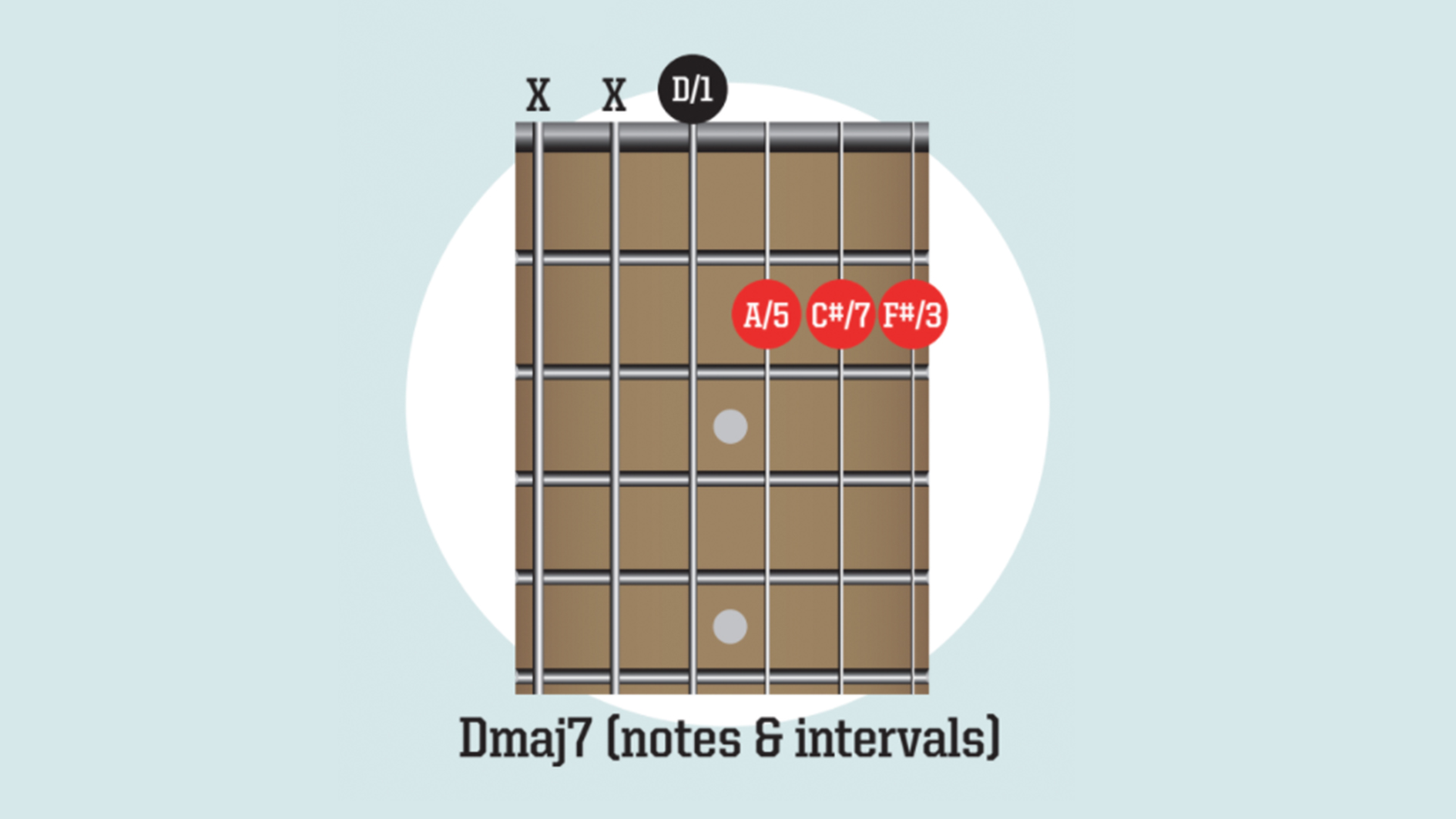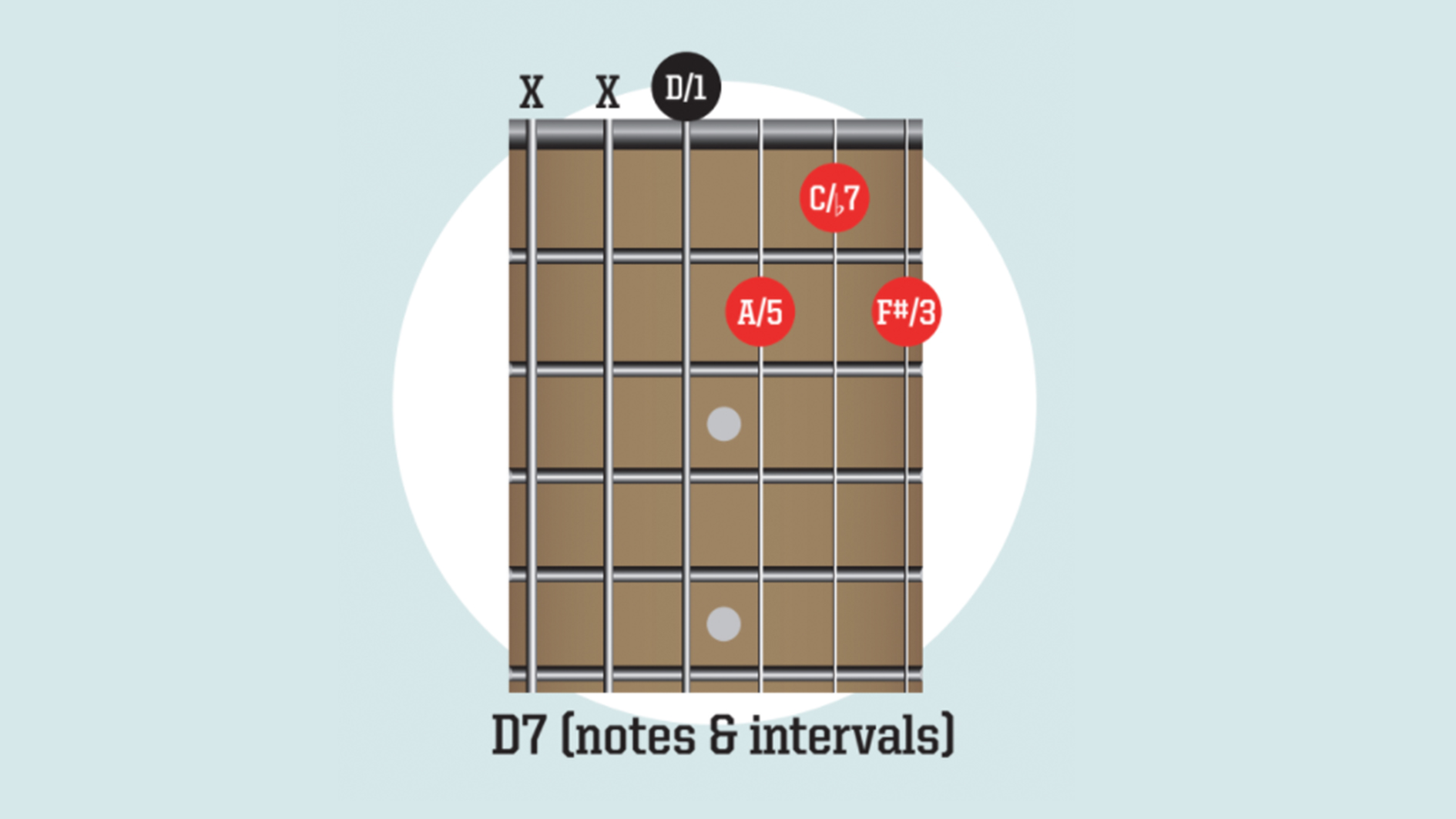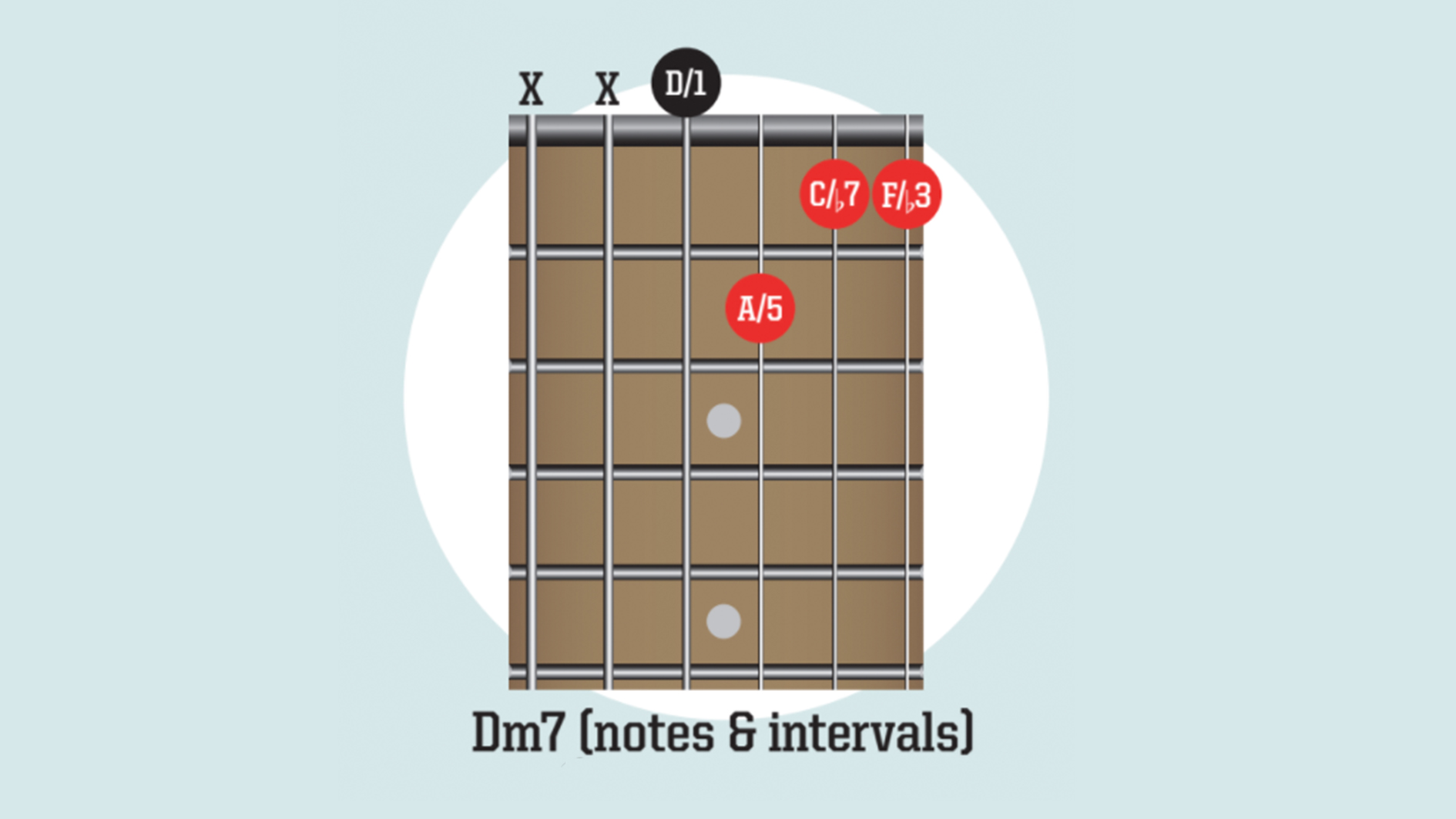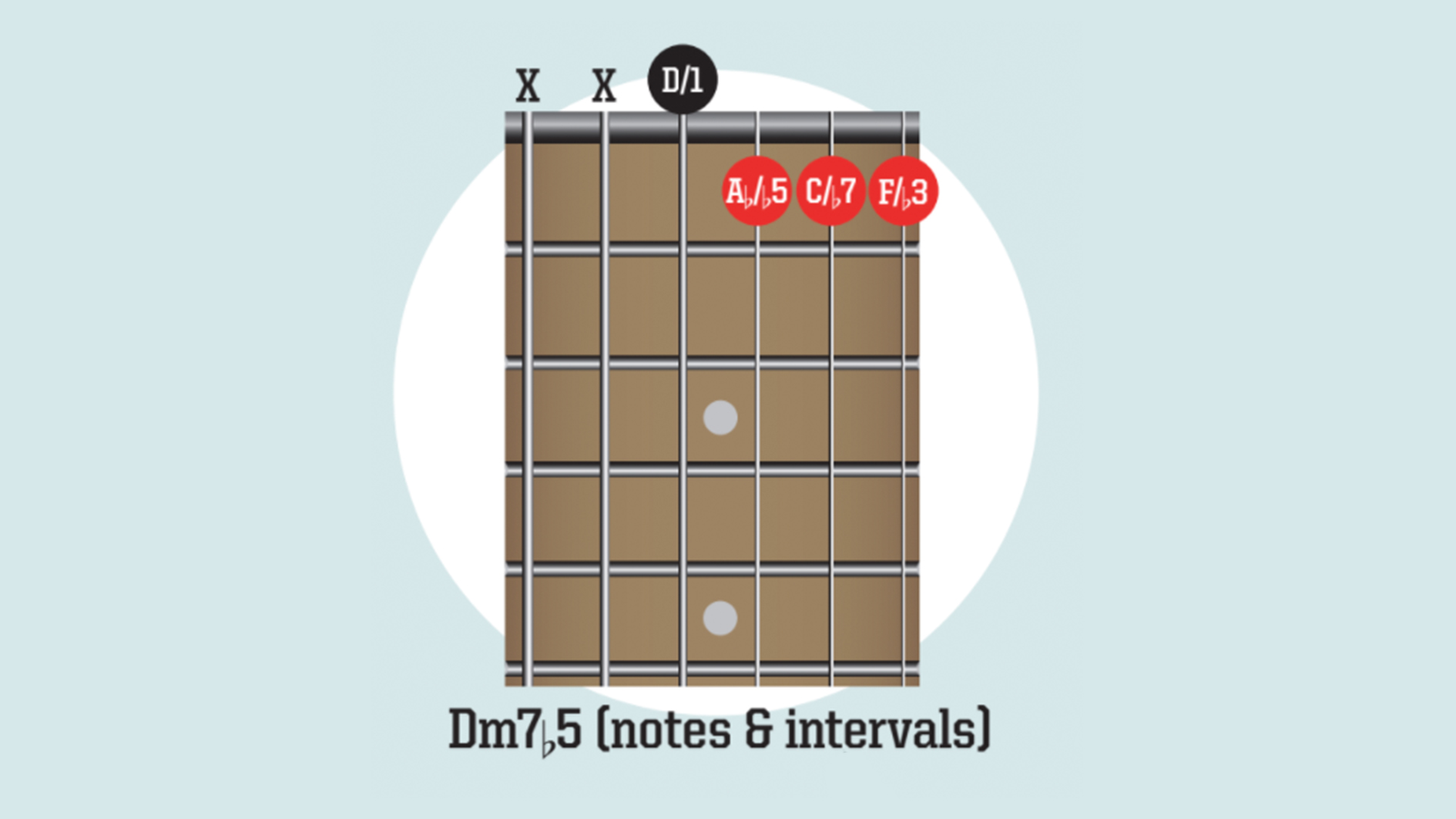7th guitar chords: chord shapes you need to know
Expand your chord repertoire with this easy-to-follow lesson

Beginner guitar: We’re pretty sure nearly all our readers could quickly play a few 7th chords – say... Am7, D7 or Cmaj7. These are easy chords that beginners might play in the open position, and more advanced players might tackle as barre chords or in open tunings.
So why, you may ask, would we go to the trouble of writing a lesson if it’s all so easy? Well, although the shapes can be easy to play, there’s still a lot of music to be made from these chords.
And understanding how they’re built and the sounds they’ll help you create is a great springboard for your songwriting and riff ideas.
What follows is a quick look at four different kinds of 7th chord, all presented with a D root note.
They're similar shapes, with each chord having just one different note to its predecessor. It’ll help if you know the notes of the D major scale (D E F# G A B C#) - so try to map those out in the open position on your guitar.
It’s also useful to give each note a number (1 2 3 4 5 6 7), because this is a core part of music theory. Grab your guitar and let’s get started!
1. D major 7 (aka Dmaj7)

Hopefully you know how to play a basic open D chord. Well, Dmaj7 changes the familiar shape by adding a new note: a C# note, which is a major 7th interval in the key of D major.
All the latest guitar news, interviews, lessons, reviews, deals and more, direct to your inbox!
Character: Mellow
Notes: D F# A C#
Intervals: 1 3 5 7
Interval names: Root note, major 3rd, perfect 5th, major 7th
2. D dominant 7 (aka D7)

Dmaj7 and D7 differ by just one note (as would any similar pair, eg, C7 and Cmaj7), and they're a semitone apart. So, whereas Dmaj7 has a major 7, D7 uses a b7 - a C note. If you can see the notes changing, you're halfway to understanding the theory.
Character: Tense
Notes: D F# A C
Intervals: 1 3 5 b7
Interval names: Root note, major 3rd, perfect 5th, minor 7th (or flat 7th)
3. D minor 7 (aka Dm7)

Another commonly used chord, Dm7 has one different note from D7 - a minor 3rd F note instead of D7's major 3rd F#.
Character: Moody
Notes: D F A C
Intervals: 1 b3 5 b7
Interval names: Root note, minor 3rd (or flat 3rd), perfect 5th, minor 7th (or flat 7th)
4. D minor 7 flat 5

If you’ve understood that each of the chords we’ve looked at involves a simple note change, you can probably work out how to play Dm7b5 just by its name. Yep, just move the 5th down a semitone.
Character: Biting
Notes: D F A b C
Intervals: 1 b3 b5 b7
Interval names: Root note, minor 3rd, diminished 5th (or flat 5th), minor 7th (or flat 7th)
Stay on track!
Here are three tracks to help you come to terms with how these chords interact with one another. The first is a vamp around D, Dmaj7 and D7, and the second jams around Dm, Dm7 and Dm7♭5. The final track is a guitar-free mix for you to jam along to using any of the chords from this lesson.
Chris was Editor of Total Guitar magazine from 2020 until its closure in 2024, when he became Lesson Editor for Guitar World, MusicRadar and Guitar Player. Prior to taking over as Editor, he helmed Total Guitar's world-class tab and tuition section for 12 years, helping thousands of guitarists learn how to play the instrument. A former guitar teacher, Chris trained at the Academy of Contemporary Music (ACM) in Guildford, UK, and held a degree in Philosophy & Popular Music. During his career, Chris interviewed guitar legends including Brian May and Jimmy Page, while championing new artists such as Yungblud and Nova Twins. Chris was diagnosed with Stage 4 cancer in April 2024 and died in May 2025.

